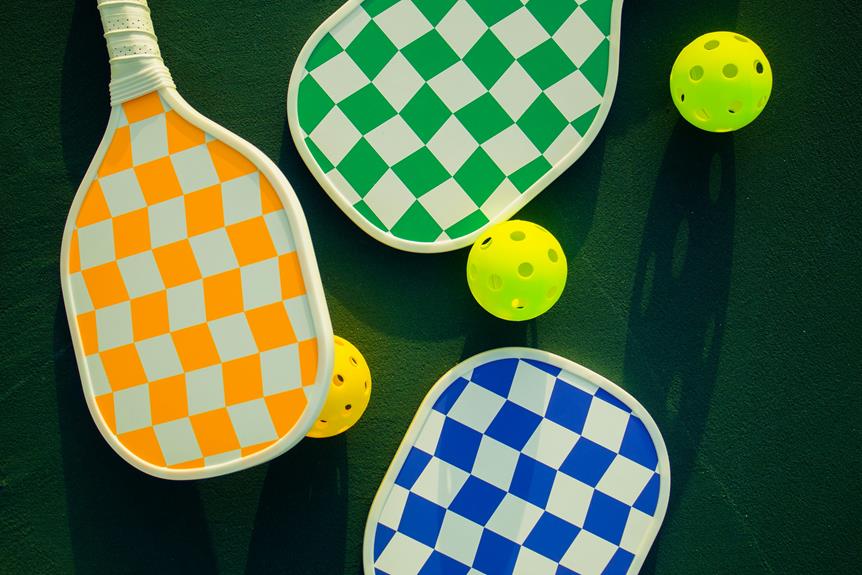
When seeking a quality pickleball ball, you must consider various key features that can greatly impact your gameplay experience. From durability to bounce consistency, each aspect plays a crucial role in your performance on the court. But what about the lesser-known factors that might elevate your game even further? Stay tuned to discover the lesser-discussed yet essential features that could make all the difference in your pickleball matches.
Durability and Longevity
When selecting a pickleball ball, prioritize durability and longevity to ensure prolonged gameplay and minimal replacements. Opting for balls made from high-quality materials can significantly impact your overall playing experience. Durable pickleball balls are less likely to crack or break during intense rallies, saving you the hassle of constantly needing to replace them. Look for balls constructed with strong, long-lasting plastics that can withstand the rigors of competitive play.
Choosing a pickleball ball with longevity in mind also means considering how well it can maintain its bounce and flight characteristics over time. A durable ball that retains its bounce and flight consistency ensures fair and enjoyable gameplay for you and your opponents. This reliability in performance can enhance your skills and strategies on the court, allowing you to focus on the game rather than worrying about the ball's quality.
Consistent Bounce and Flight
To ensure a fair and enjoyable gameplay experience, prioritize pickleball balls that offer consistent bounce and flight characteristics. When the ball consistently bounces predictably off the paddle and court surface, it enhances the overall quality of play for everyone involved. A consistent bounce ensures that players can rely on the ball's behavior, allowing for better control and strategic shot-making during rallies.
Moreover, consistent flight characteristics are essential for maintaining a level playing field. A pickleball ball that flies consistently through the air without sudden deviations or wobbling ensures that players can accurately judge the ball's trajectory. This predictability is particularly crucial during serves and overhead shots where precise placement is key to gaining an advantage over your opponents.
Indoor Vs. Outdoor Performance
For optimal performance, differentiate between indoor and outdoor pickleball balls based on their specific characteristics. Indoor pickleball balls are designed for controlled environments and typically have larger holes than outdoor balls. The larger holes reduce the impact of indoor air currents, providing a more predictable flight path and bounce during play. These balls are often lighter and have a softer construction to adapt better to indoor playing surfaces, such as wood or composite floors.
On the other hand, outdoor pickleball balls are built to withstand varying weather conditions, including wind and heat. They usually have smaller holes to minimize the impact of outdoor elements on their flight trajectory. Outdoor balls are made with more durable materials like hard plastic to ensure longevity on rougher outdoor surfaces like concrete or asphalt courts.
When choosing between indoor and outdoor pickleball balls, consider the playing environment and surface to optimize your game experience. Indoor balls excel in controlled settings, while outdoor balls are resilient to outdoor conditions, providing reliable performance in different weather scenarios.
Material Composition and Texture
Considering the importance of material composition and texture in pickleball balls, understanding these aspects is crucial for optimal gameplay performance. The material composition of a pickleball ball greatly affects its bounce, durability, and overall playability. Typically, pickleball balls are made from either polymer or plastic.
Polymer balls are known for their consistent bounce and durability, making them ideal for competitive play. On the other hand, plastic balls are more affordable but may lack the same level of performance as polymer balls.
Texture also plays a significant role in the quality of a pickleball ball. Balls with a smooth surface tend to travel faster through the air, making them suitable for fast-paced games. Conversely, balls with a textured surface provide more control and spin, allowing players to execute precise shots with ease.
When choosing a pickleball ball based on texture, consider your playing style and preferences to ensure an enjoyable gameplay experience. By paying attention to the material composition and texture of pickleball balls, you can select the right ball that enhances your performance on the court.




